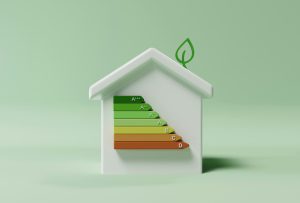If you have plans to start the journey into letting property out as a landlord, you’ll no doubt have started looking at buy-to-let mortgages. It can be a bit of a minefield with the variety of options available so it is always advisable to speak with a buy to let mortgage broker to help you navigate your way to the best deals.
One thing that perhaps stands out more than anything else is that a buy-to-let mortgage is typically more expensive than your regular mortgage. With higher fees, steeper interest rates and the need for a larger deposit, obtaining the mortgage that starts your landlord journey can appear costly.
In this edition of our blog, we look at the buy-to-let mortgage and how it is more expensive than your more traditional residential mortgage.
What is a buy-to-let mortgage?
A buy-to-let mortgage is a specialist mortgage offered to people purchasing a property that they will let out rather than live in. Where a more regular mortgage is based on your income, credit score and personal circumstances, the buy-to-let mortgage takes into account the rental potential of the property too. The amount you can borrow will be based on the rental income of the property with an expectation that the income from rent will cover 125% up to 160% of your mortgage payments depending on your circumstances.
Buy-to-let mortgage requirements
Each lender may have slightly different lending criteria, but you can expect that many will want to see that:
- You own your current home. Either outright or with an existing mortgage, although not all lenders require this.
- You have a regular income from employment or self-employment. This may be set at a minimum level of £25,000, however, many lenders have no minimum income requirement.
- That you have a good credit record and have not got a high credit utilization rate.
- That you have a deposit of 20% of the property value. (Be aware this can reach as high as 40%)
- That you can show rental income will cover 125% to 160% of the mortgage payments at a stressed interest rate.
- The property is suitable for letting. Certain property types may not fall within the criteria of the lender.
How much can you borrow for a buy-to-let mortgage?
The lender will decide how much you can borrow based on the expected rental income from the property. They will expect to see the rental income covered by the payments, plus a little more. Should it be that rental projections don’t see the mortgage covered, the lender may ask for a bigger deposit.
Why are buy-to-let mortgages more expensive?
Primarily, it’s the risk. The lender is lending you the money, but it is not you living in the house, so they see their money as being put into a riskier investment. The lender cannot guarantee you will always have tenants, and they cannot predict the financial position of anyone renting the home. For them, this means they see giving you money as a little more of a gamble.
To cover this risk, the amount of money being lent will see higher interest rates added to it and the mortgage may have more expensive arrangement fees.
What makes a buy-to-let mortgage more expensive?
As we touched upon, the risk taken by the lender is much more significant when lending for a buy-to-let property but there is no such thing as a “risk fee”. Instead, the added costs come via the interest rates offered, the set-up fees and the deposit amount.
Interest rates
The interest rates on a buy-to-let mortgage are typically higher than those offered on residential mortgages. Due to the inconsistent nature of rental income, a lender is going to see it as a gamble offering money on a property that may not garner any return. These rates can be anything from 1% to 3% higher than those found on a standard residential mortgage. At the time of writing, the average interest rate across all new buy to let loans was 5.4%.
Arrangement fees
With any mortgage, there is an arrangement fee but with buy-to-let, these fees are notably higher. Your chosen lender may look to add a fee based on a percentage of the amount being borrowed. This can be as high as 3%. As an example, let’s say you are borrowing £300,000, with a 3% arrangement fee, you’ll be paying £9,000 just to get the mortgage!
High deposit
Buy-to-let mortgages will require a higher deposit than the traditional residential mortgage. This can range from being 20% of the property value to 40% in some cases. The more deposit you have, the more favourable deals you’ll find.
Interest-only
In many cases, a buy to let mortgage is interest only. This means that your monthly payments are paying back the interest that the loan accrues rather than the capital itself. Once the mortgage term ends, your mortgage balance will be the same amount as when you first borrowed the money. This can see your monthly payments lower than you may have expected but you’ll still have to find the cash to repay the mortgage when your mortgage term has finished.
Buy-to-let mortgages can be complex and costly so you should only head into it with sufficient knowledge of both the costs and risks. That is why we are here! As a free mortgage broker we are passionate and experienced and spends their time helping you find the best possible buy to let mortgage for your needs. From remortgaging advice to help to buy mortgages and everything in between, we can set you on the right property path. Contact us today!







